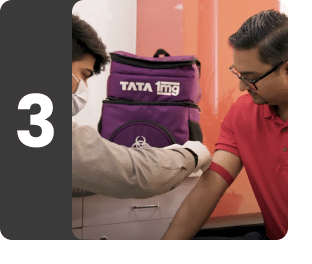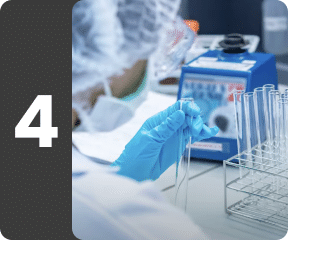Reticulocyte Count
Understanding Reticulocyte Count
What is Reticulocyte Count?
The Reticulocyte Count is a blood test that measures the number of reticulocytes (immature red blood cells). It helps evaluate bone marrow function and assess the body’s ability to produce red blood cells, providing crucial insights into various blood disorders and conditions affecting red blood cell production.
Reticulocytes are newly produced, relatively immature red blood cells that are released from the bone marrow into the blood. They play a key role in indicating how effectively the body is producing new red blood cells. The Reticulocyte Count test measures the number of these immature cells in the blood, providing valuable information about bone marrow function.
The Reticulocyte Count test is recommended when an individual experiences symptoms of anemia, such as fatigue, weakness, or pallor. It may also be used to evaluate the cause of blood loss, and bone marrow dysfunction in individuals undergoing chemotherapy or those with chronic kidney disease (CKD). The Reticulocyte Count test is often performed alongside other tests, such as a Complete Blood Count (CBC), to provide a comprehensive view of an individual’s overall health and hematological status. It can help monitor recovery after blood loss or evaluate conditions affecting red blood cell production.
The Reticulocyte Count test is particularly useful in diagnosing and monitoring different types of anemia, especially when distinguishing between inadequate production of red blood cells and their increased destruction or loss. A high reticulocyte count may indicate conditions like hemolytic anemia (a condition that occurs when red blood cells are destroyed too quickly) or blood loss. Conversely, a low reticulocyte count may indicate bone marrow isn't producing or releasing enough red blood cells into circulation, which could point to aplastic anemia, nutritional deficiencies, or chronic disease. Thus, the Reticulocyte Count test serves as a valuable test for doctors in evaluating the underlying causes of anemia and directing appropriate treatment plans.
No special preparation is typically required for the Reticulocyte Count test. Inform your doctor about any medications or supplements that you may be taking before undergoing this test as a few of them may affect your test results, potentially requiring adjustments or temporary discontinuation before the test.
Test result ranges are approximate and may differ slightly between labs depending on the methodology and laboratory guidelines. Talk to your doctor about your specific test results. The results will help them evaluate your medical condition and formulate an overall treatment plan.
What is Reticulocyte Count used for?
The Reticulocyte Count test is done to:
- Diagnose and evaluate the cause of anemia.
- Monitor the body’s response to treatment for anemia.
- Assess bone marrow function.
- Evaluate recovery from blood loss or hemolysis (destruction of red blood cells).
- Monitor patients undergoing treatment for conditions that affect red blood cell production, such as chemotherapy.
- Help differentiate between types of anemia, such as those caused by iron deficiency versus those resulting from chronic disease.
What does Reticulocyte Count measure?
The Reticulocyte Count test measures the percentage or absolute number of reticulocytes in the blood. This count provides critical information about the rate of red blood cell production in bone marrow.
The results are usually given as a percentage of total red blood cells. A higher reticulocyte count means that the bone marrow is actively producing new red blood cells, often in response to blood loss or anemia. On the other hand, a low reticulocyte count may indicate that the body isn’t making enough red blood cells, which can happen due to conditions like aplastic anemia or nutritional deficiencies.
Overall, the Reticulocyte Count test helps doctors understand the reasons behind anemia, monitor how well treatments are working, and guide further medical care. By revealing how effectively the body is producing red blood cells. This test is the key to managing various blood-related health issues.
Interpreting Reticulocyte Count results
Interpretations
Normal levels:
· Adults: 0.5% to 2.5%
· Children: 2% to 6%
Reticulocyte count may vary from person to person depending on a number of other factors. Hence, Reticulocyte Count Test is performed and interpreted together with other tests like CBC, Hematocrit, Iron Tests, etc. to determine the cause of abnormalities, if any.
Higher than normal reticulocyte count may indicate:
· Hemolytic anemia (anemia due to destruction of RBCs)
· Excessive bleeding
· Bleeding disorders in newborns
· Kidney diseases causing increased secretion of hormone erythropoietin
· Cigarette smoking
Lower than normal reticulocyte count may indicate:
· Bone marrow failure due to infections, cancer, chemotherapy, etc.
· Liver cirrhosis
· Iron deficiency anemia
· Pernicious anemia (vitamin B12 or folate deficiency)
· Aplastic anemia (anemia due to bone marrow damage)
· Kidney diseases causing decreased secretion of hormone erythropoietin
· Alcoholism
Answers to Patient Concerns & Frequently Asked Questions (FAQs) about Reticulocyte Count
Frequently Asked Questions about Reticulocyte Count
Q. What is the Reticulocyte Count test?
Q. Why is the Reticulocyte Count test done?
Q. How is the test performed?
Q. Do I need to fast before the Reticulocyte Count test?
Q. What do low reticulocyte levels indicate?
Q. What do high reticulocyte levels indicate?
Q. How often should I have a Reticulocyte Count test?
Q. What should I do if I have symptoms of anemia?
Q. Are reticulocyte counts used to monitor chronic conditions?
Q. What lifestyle changes can help improve my reticulocyte count?
Q. What other tests might I have along with the Reticulocyte Count test?
Q. Can the Reticulocyte Count be done at home?
Q. How does Tata 1mg ensure accurate lab test results?
Book a Reticulocyte Count test at home near me





Other tests









